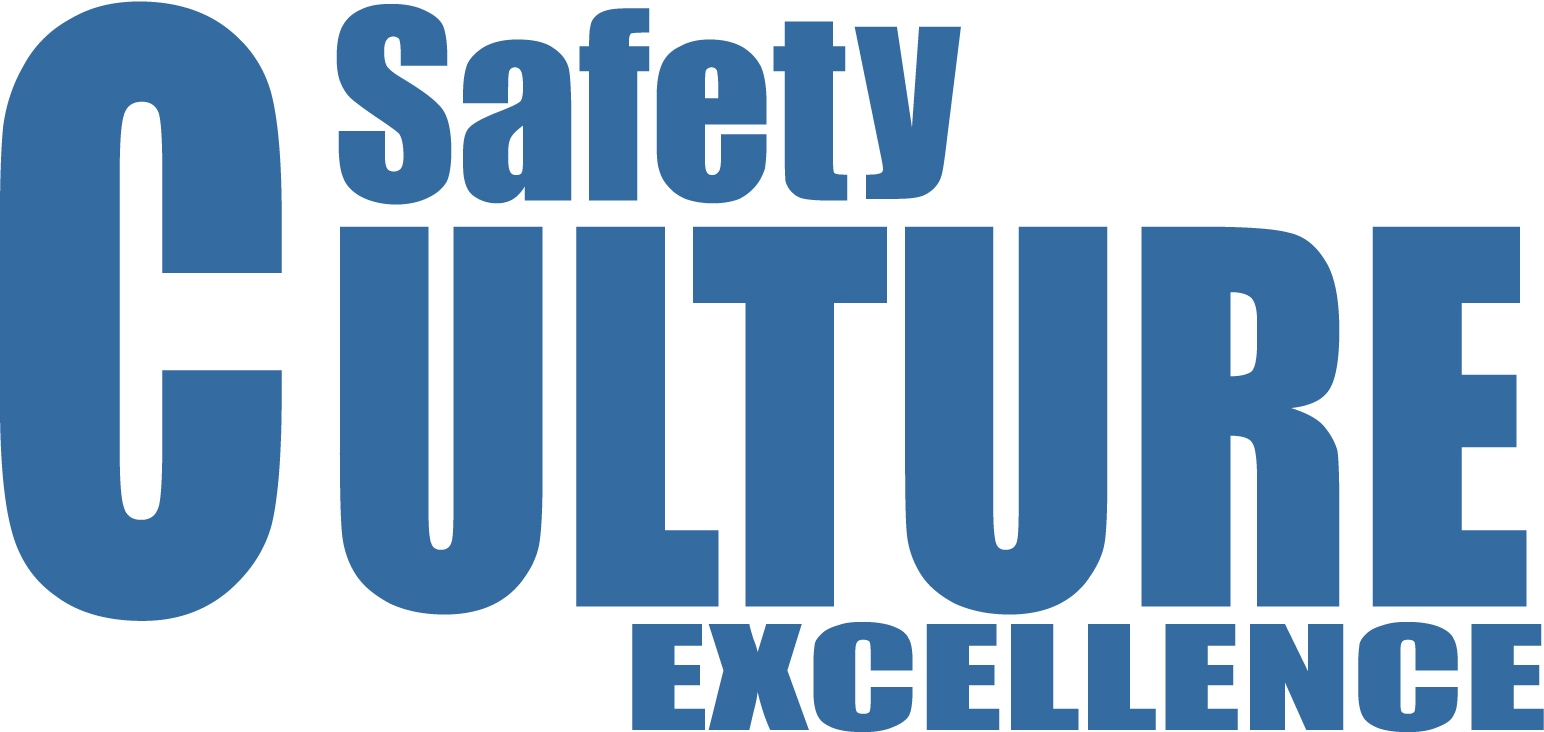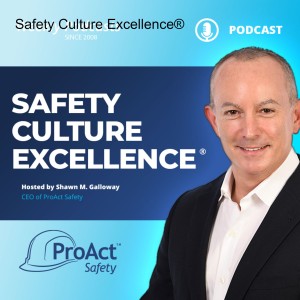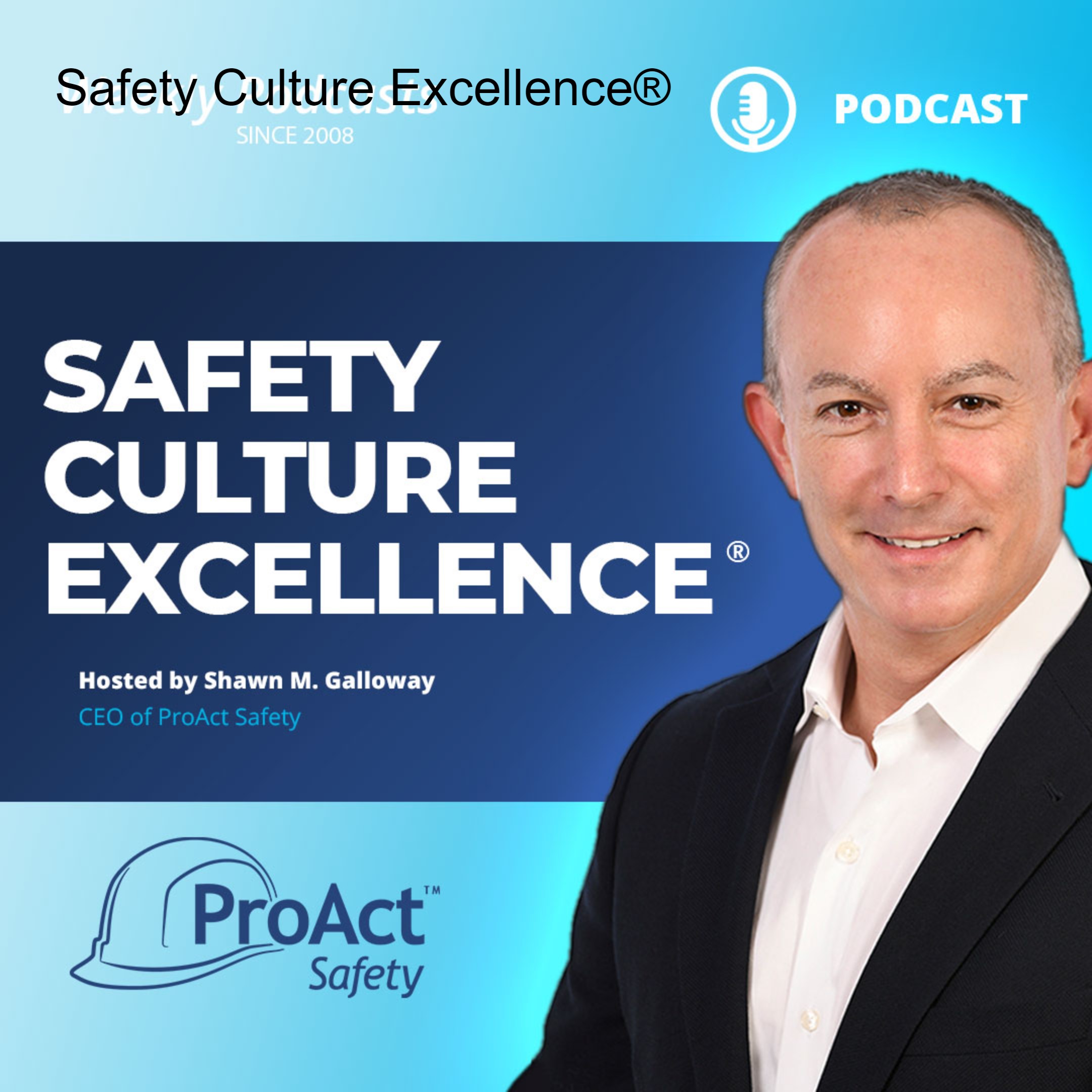Episodes

Wednesday Oct 02, 2013
Safety: Well, DUH!
Wednesday Oct 02, 2013
Wednesday Oct 02, 2013
When my kids were young and I said something they thought was obvious, they would say, “Well, duh!” I think this same attitude is prevalent today when we talk about safety strategy. Most organizational leaders and safety professionals seem to think that safety strategy is either extremely obvious or unnecessary. When we ask about an organization’s safety strategy we get a list of either safety objectives or safety activities. Neither of these are strategies.
Most organizations we work with are doing almost identical safety activities. They have a safety mission and/or vision statement, safety training, meetings, stand downs, rules, procedures, posters, JSAs, and safety supervision or oversight. Leaders try to say the right things about safety to demonstrate their commitment and safety professionals try to make a showing in the workplace to dispel the concept that they are paper pushers only.
But few organizations have thought about safety strategically as they would think about a new-product rollout or a merger or acquisition. Safety is not simply activities that limit risks. Safety performance is impacted by the organizational climate, chemistry, culture, management practices and a host of other influences. Strategy is creating a framework that guides decisions about activities and evaluates their contribution to the overall goals. Few organizations have a safety strategy and literally all of them need one.
-Terry L. Mathis
Terry L. Mathis is the founder and CEO of ProAct Safety, an international safety and performance excellence firm. He is known for his dynamic presentations in the fields of behavioral and cultural safety, leadership, and operational performance, and is a regular speaker at ASSE, NSC, and numerous company and industry conferences. EHS Today listed Terry as a Safety Guru in ‘The 50 People Who Most Influenced EHS in 2010, 2011 and 2012-2013. He has been a frequent contributor to industry magazines for over 15 years and is the coauthor of STEPS to Safety Culture Excellence, 2013, WILEY.

Monday Sep 23, 2013
308 - The Perceptions That Shape Safety Excellence
Monday Sep 23, 2013
Monday Sep 23, 2013
Greetings everyone, this podcast recorded while in Starkville, Mississippi. I’d like to share an article written by Terry Mathis, published June 2013 in EHS Today Magazine. It was titled, The Perceptions That Shape Safety Excellence. The published article can either be found on the magazine’s website or under Insights at www.ProActSafety.com. I hope you enjoy the podcast this week. If you would like to download or play on demand our other podcasts, please visit the ProAct Safety’s podcast website at: http://www.safetycultureexcellence.com. If you would like access to archived podcasts (older than 90 days – dating back to January 2008) please visit www.ProActSafety.com/Store. For more detailed strategies to achieve and sustain excellence in performance and culture, pick up a copy of our book, STEPS to Safety Culture Excellence - http://proactsafety.com/insights/steps-to-safety-culture-excellence Have a great week! Shawn M. Galloway ProAct Safety

Monday Sep 16, 2013
307 - You Need to Manage Strategically
Monday Sep 16, 2013
Monday Sep 16, 2013
Greetings everyone, this podcast recorded while in Orange, Texas. I’d like to share an article I wrote, published June 2013 in ISHN Magazine. It was titled, You Need to Manage Strategically. The published article can either be found on the magazine’s website or under Insights at www.ProActSafety.com. I hope you enjoy the podcast this week. If you would like to download or play on demand our other podcasts, please visit the ProAct Safety’s podcast website at: http://www.safetycultureexcellence.com. If you would like access to archived podcasts (older than 90 days – dating back to January 2008) please visit www.ProActSafety.com/Store. For more detailed strategies to achieve and sustain excellence in performance and culture, pick up a copy of our book, STEPS to Safety Culture Excellence - http://proactsafety.com/insights/steps-to-safety-culture-excellence Have a great week! Shawn M. Galloway ProAct Safety, Inc

Monday Sep 09, 2013
306 - Overcoming invulnerability to strengthen safety culture
Monday Sep 09, 2013
Monday Sep 09, 2013
Greetings everyone, this podcast recorded while in Bethesda, Maryland. I’d like to share an article I wrote, published June 2013 in BIC Magazine. It was titled, Overcoming invulnerability to strengthen safety culture. The published article can either be found on the magazine’s website or under Insights at www.ProActSafety.com.
I hope you enjoy the podcast this week. If you would like to download or play on demand our other podcasts, please visit the ProAct Safety’s podcast website at: http://www.safetycultureexcellence.com. If you would like access to archived podcasts (older than 90 days – dating back to January 2008) please visit www.ProActSafety.com/Store. For more detailed strategies to achieve and sustain excellence in performance and culture, pick up a copy of our book, STEPS to Safety Culture Excellence - http://proactsafety.com/insights/steps-to-safety-culture-excellence
Have a great week!
Shawn M. Galloway
ProAct Safety, Inc

Wednesday Sep 04, 2013
Cultural Compliance: A Step Short of Excellence
Wednesday Sep 04, 2013
Wednesday Sep 04, 2013
What if everyone in your organization obeys the rules, follows the procedures and wears their PPE with a minimum of supervision or management? Is this safety culture excellence? NO! This is a culture of compliance, not excellence. Certainly, it is a move in the right direction and is a desirable accomplishment. It is a step above command-and-control but still a number of steps short of true excellence.
Excellence is well above and beyond simple compliance. Most rules and procedures are minimal standards for safety and only address the most common and obvious risks. Even organizations which reach high levels of compliance still have a level of accidents untouched by their efforts. As organizations begin to plateau in their compliance efforts, they often look for advanced strategies to help them accomplish the next step change.
Beyond compliance, workers must think and act intelligently; not just mindlessly comply. Organizations must examine their influences on workers to make sure they reinforce safety and not shortcuts or acceptance of risks. When all factors, both individual and organizational are aligned to go above and beyond compliance, the potential for excellence begins. At this level of performance, compliance is so basic that is expected of everyone all the time. The new measure of success is repeated victories, not simply playing a decent game.
-Terry L. Mathis
Terry L. Mathis is the founder and CEO of ProAct Safety, an international safety and performance excellence firm. He is known for his dynamic presentations in the fields of behavioral and cultural safety, leadership, and operational performance, and is a regular speaker at ASSE, NSC, and numerous company and industry conferences. EHS Today listed Terry as a Safety Guru in ‘The 50 People Who Most Influenced EHS in 2010, 2011 and 2012-2013. He has been a frequent contributor to industry magazines for over 15 years and is the coauthor of STEPS to Safety Culture Excellence, 2013, WILEY.

Wednesday Aug 28, 2013
Lateral Communication
Wednesday Aug 28, 2013
Wednesday Aug 28, 2013
When we talk to most executives about effective safety communication, they instantly focus on the vertical information (i.e., what flows from leaders to the workers and what workers send back to leaders). Vertical communication can happen directly, through various communication media, or through the usual organizational levels person-to-person. While this vertical information is important, so is lateral communication: what goes between workers and other workers.
Safety engagement and behavioral programs often attempt to increase and/or improve lateral communication. Regardless of whether you are using such a program or simply wanting to improve, if you want your workers to talk effectively to each other about safety, you should address the following issues:
1) Conversations between workers should be focused on improvement targets, not just common practice. Targeted improvements create legitimate talking points and create discrete dichotomies of “did you do this” or “did you not do this?” Having workers simply evaluate each others performance more often leads to disagreement than improvement. Remember to consider targeting improvements in safety culture as well as accident prevention.
2) The model for conversations should be one of coaching rather than confrontation. Confrontation creates enemies who disagree. Coaching creates allies in change.
The goals of lateral conversations should be to, A) Encourage those working toward improvement, or B) To discover what is influencing or blocking improvements in those observed not meeting improvement goals.
Often the best way of discovering such issues is simply to ask “Why?” or “Why not?” when a fellow worker is not doing the targeted precaution. Approaches that follow these guidelines more often prove successful.
-Terry L. Mathis
Terry L. Mathis is the founder and CEO of ProAct Safety, an international safety and performance excellence firm. He is known for his dynamic presentations in the fields of behavioral and cultural safety, leadership, and operational performance, and is a regular speaker at ASSE, NSC, and numerous company and industry conferences. EHS Today listed Terry as a Safety Guru in ‘The 50 People Who Most Influenced EHS in 2010, 2011 and 2012-2013. He has been a frequent contributor to industry magazines for over 15 years and is the coauthor of STEPS to Safety Culture Excellence, 2013, WILEY.

Monday Aug 26, 2013
304 - Should the Safety Department Manage Safety?
Monday Aug 26, 2013
Monday Aug 26, 2013
Greetings everyone, this podcast recorded while in Clinton, Tennessee. I’d like to share an article written by Terry Mathis, published May 2013 in IndustryWeek Magazine. It was titled, Should the Safety Department Manage Safety? The published article can either be found on the magazine’s website or under Insights at www.ProActSafety.com. I hope you enjoy the podcast this week. If you would like to download or play on demand our other podcasts, please visit the ProAct Safety’s podcast website at: http://www.safetycultureexcellence.com. If you would like access to archived podcasts (older than 90 days – dating back to January 2008) please visit www.ProActSafety.com/Store. For more detailed strategies to achieve and sustain excellence in performance and culture, pick up a copy of our book, STEPS to Safety Culture Excellence - http://proactsafety.com/insights/steps-to-safety-culture-excellence Have a great week! Shawn M. Galloway ProAct Safety

Wednesday Jul 31, 2013
Divided Management Creates Conflicting Priorities
Wednesday Jul 31, 2013
Wednesday Jul 31, 2013
Almost all jobs involve multiple priorities. If you have one boss who helps you balance these priorities, it becomes more and more clear how to do so. When workers see how their boss handles multiple priorities and get feedback on their own handling of them, they get a feel for the relative importance of each.
However, when different aspects of business are managed or supervised by different people, there will inevitably be a conflict of priorities. If one person supervises production, another supervises quality, and another supervises safety, there is not only a conflict of three priorities, but of three people. Workers now must juggle multiple priorities as well as multiple personalities and relationships. It is difficult to see the unity of priorities when the organization divides them into different departments and personnel. The big picture tends to be a divided screen with three pictures. The worker can only watch one at a time.
It is critically important for organizations to balance and unify, not divide priorities. Most organizations want safe, quality production, not three conflicting aspects of work. It is fine to have experts in each field who advise and serve as resources. It is not good to try to make such experts partial supervisors on the shop floor. One supervisor can better manage the whole process and unify the aspects of the process where workers view their role as doing the work, rather than refereeing their multiple bosses.
-Terry L. Mathis
Terry L. Mathis is the founder and CEO of ProAct Safety, an international safety and performance excellence firm. He is known for his dynamic presentations in the fields of behavioral and cultural safety, leadership, and operational performance, and is a regular speaker at ASSE, NSC, and numerous company and industry conferences. EHS Today listed Terry as a Safety Guru in ‘The 50 People Who Most Influenced EHS’ in 2010, 2011 and 2012-2013. He has been a frequent contributor to industry magazines for over 15 years and is the coauthor of STEPS to Safety Culture Excellence, 2013, WILEY.

Monday Jul 29, 2013
300 - Leadership Support for Safety: A Self-Contradicting Term
Monday Jul 29, 2013
Monday Jul 29, 2013
Greetings everyone, this podcast recorded while in Missoula, Montana. I’d like to share an article Terry Mathis wrote, published April 2013 in EHS Today Magazine. It was titled, Leadership Support for Safety: A Self-Contradicting Term. The published article can either be found on the magazine’s website or under Insights at www.ProActSafety.com. I hope you enjoy the podcast this week. If you would like to download or play on demand our other podcasts, please visit the ProAct Safety’s podcast website at: http://www.safetycultureexcellence.com. If you would like access to archived podcasts (older than 90 days – dating back to January 2008) please visit www.ProActSafety.com/Store. For more detailed strategies to achieve and sustain excellence in performance and culture, pick up a copy of our book, STEPS to Safety Culture Excellence - http://proactsafety.com/insights/steps-to-safety-culture-excellence Have a great week! Shawn M. Galloway ProAct Safety, Inc

Monday Jul 01, 2013
296 - Stop Trying To Create A Safety Culture
Monday Jul 01, 2013
Monday Jul 01, 2013
Greetings everyone, this podcast recorded while in Bismarck, North Dakota. I’d like to share an article I wrote that was published March 2013 in Occupational Health and Safety Magazine. It was titled, Stop Trying To Create A Safety Culture. The published article can either be found on the magazine’s website or under Insights at www.ProActSafety.com. I hope you enjoy the podcast this week. If you would like to download or play on demand our other podcasts, please visit the ProAct Safety’s podcast website at: http://www.safetycultureexcellence.com. If you would like access to archived podcasts (older than 90 days – dating back to January 2008) please visit www.ProActSafety.com/Store. For more detailed strategies to achieve and sustain excellence in performance and culture, pick up a copy of our book, STEPS to Safety Culture Excellence, available through WILEY (publisher), Amazon or Barnes and Noble. Have a great week! Shawn M. Galloway ProAct Safety, Inc

